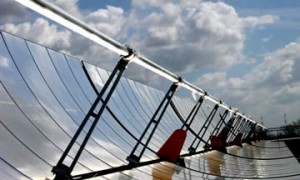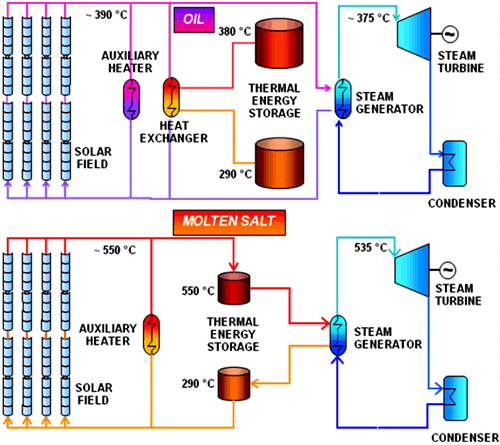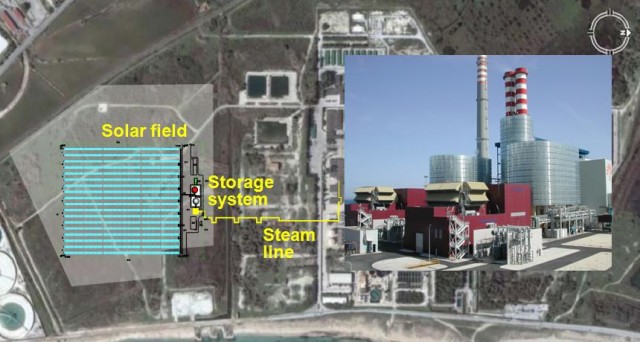A blow that will affect the UK renewables industry for decades
At one stroke Energy Secretary Chris Huhne has guaranteed that Britain will get very little electricity from smaller scale renewables. He has announced that the ‘threat’ (his words) from ground-mounted solar panels makes it necessary to urgently review the feed-in tariffs for all solar installations above 50 kilowatts. These tariffs were meant to be stable until April 2012 and would then fall in a orderly and guaranteed way over the next few years. He hasn’t said by how much the rates for larger scale PV will fall, or when the reduction will happen. But the uncertainty introduced by his intervention, and his obvious willingness to fiddle with the feed in tariffs whenever he feels the urge, means that he has destroyed the ability of developers to raise money for any substantial renewables project. The UK renewables industry, from PV to geothermal, needs certainty and stability and this is precisely what has just disappeared.
Solar farms
The Secretary of State’s actions have been prompted by a rash of planning applications for large ground mounted solar farms, principally in Cornwall because the financial returns will be better there than anywhere else in the UK. Perhaps 30 solar farms would have been built before the PV feed in tariff started to fall under the orderly ‘degression’ laid out by his department. Not a single panel has yet been placed on the ground and only about four schemes have got planning permission from Cornwall council so far.
These four schemes will probably be constructed although their financiers will be worried that the Huhne review will be implemented before the farm is completed. A small delay might mean – who knows? - a serious fall in the returns available to investors because a key component doesn’t arrive from China in time.
All the other schemes fighting to get through planning processes and to arrange for connection to the grid will probably be abandoned. The DECC Press Office could not tell me when the changes will be introduced but it sounds like sometime over the summer. It is difficult to exaggerate the impact on the PV industry across Britain.
The Cornish PV industry might have built 150 Megawatts of capacity in the next year, driving down costs across the industry and giving the UK vital experience of this technology. While this would only have provided about a twenty thousandth of UK electricity demand, it would have been the first time that the UK government had ever seen how to get a substantial renewables industry started and flourishing. Once doesn't have to believe that PV is the right technology for Britain - and I certainly don't - to despair at the stupidity of Huhne's move.
But at the first sign of successful commercial industry developing, the government has pulled the rug and the energetic edifice of financiers, construction companies and German firms entering the UK to provide the know-how to get the equipment on the ground will now collapse within weeks. In a symbolic coincidence, one of the most important German solar firms, Conergy, had only just announced its arrival in the UK when the Huhne statement was made. The able entrepreneurs just beginning to see a role in the renewables industry will return to other sectors where their talents aren’t abused in this way.
Why is the end of any substantial hope for smaller scale renewables in the UK?
Most renewable projects take substantial amounts of time to get to the point at which construction is complete.
For example, the process of getting a solar farm running takes up to a year. (Wind takes far longer).
1) The developer finds a site that is suitable
2) The developer approaches the landowner and agrees terms
3) The scheme is costed and planned. The developer needs to work out how the farm will be constructed and how it will connect to the local grid
4) Planning permission is applied for and local consultation takes place. This may take four months
5) Environmental assessment will happen. Will the site affect breeding birds, for example?
6) The funds necessary for the farm will be raised
7) Construction can start, and connection cables will need to be dug to the nearest electricity transformer
To get any substantial project from the start of this process to the start of installation takes hundreds of thousands of pounds of investment. That is before considering the cost of the panels themselves. To get the project financed, the investors must believe in the reliability of their returns. By indicating today (February 7th 2011) that rates will go down sometime ‘in the summer’ but giving no indication of the amount of the reduction, Chris Huhne has made it impossible for any PV project above 50 kilowatts to go ahead anywhere in the country.
But, more generally, his action has demonstrated that any renewable technology which is attracting real commercial interest will be arbitrarily penalised to ensure it doesn’t develop. The Conservative 2010 manifesto said ‘Britain needs an energy policy that is clear, consistent and stable’. Today’s announcement is the opposite.
The case that the FiT tariff wasn’t designed for larger scale projects
The Huhne announcement suggests that the Cornish PV developers were somehow abusing the FiT regime and that he was forced to act against the ‘threat’ that they represented. The DECC press office told me that ‘commercial companies were exploiting’ a scheme designed for smaller projects. It told me that larger-scale solar installations ‘weren’t anticipated’.
The response to this is obvious. Throughout its long-drawn out evolution the Feed In Tariff was always intended to offer a guaranteed rate to projects up to 5 megawatts. A 5 megawatt photovoltaic installation will cost about £14m today. Did the government not realise that this scale of investment can only be made by a large and well-funded company? And if it didn’t want large companies to get involved, why did offer FiTs up to the 5 megawatt level, instead of stopping, say, at 100 kilowatts?
Huhne’s press office said that the 5 megawatt limit was a mistake made by the previous government and the current administration was merely rectifying it. But here’s what the Lib Dems (Huhne’s party) said about the FiT scheme in their 2010 manifesto - ‘ Liberal Democrats will .. ensur(e) the feed-in tariff scheme which guarantees prices for micro-generation will benefit community-scale, small business and agricultural projects of under 5MW.’ The truth is that all parties supported the Feed in Tariff in all respects and Huhne is wrong to claim otherwise.
To make a real difference to electricity supply renewables must be implemented on an industrial scale. If we continue treat renewables as a charming and quaint cottage industry and refuse to allow entrepreneurs to prosper, we will leave the UK energy industry in the hands of the six oligopolists who currently dominate the industry. Today we have just thrown away another chance to get innovation and cost-reduction in the UK energy industry.
Addendum: the impact on PV
About 20,000 installations of PV have now been completed in the UK. The average size is about 2.5 kilowatts and the total capacity therefore about 50 megawatts. (Many of these smaller installations on domestic roofs will have been incentivised by FiTs of 41p per kilowatt hour, compared to the much lower 29p paid to the prospective Cornish solar farms.) These 20,000 installations will produce about the same amount of electricity as nine of the Cornish farms that will have been abandoned in the last 24 hours.
Domestic PV is almost completely irrelevant to our electricity needs. To make a meaningful difference to our renewables targets we need hundreds or even thousands of solar farms. Italy put in place 2 gigawatts of PV capacity last year and 5 gigawatts is expected this year. This is one hundred times the scale of the UK.




